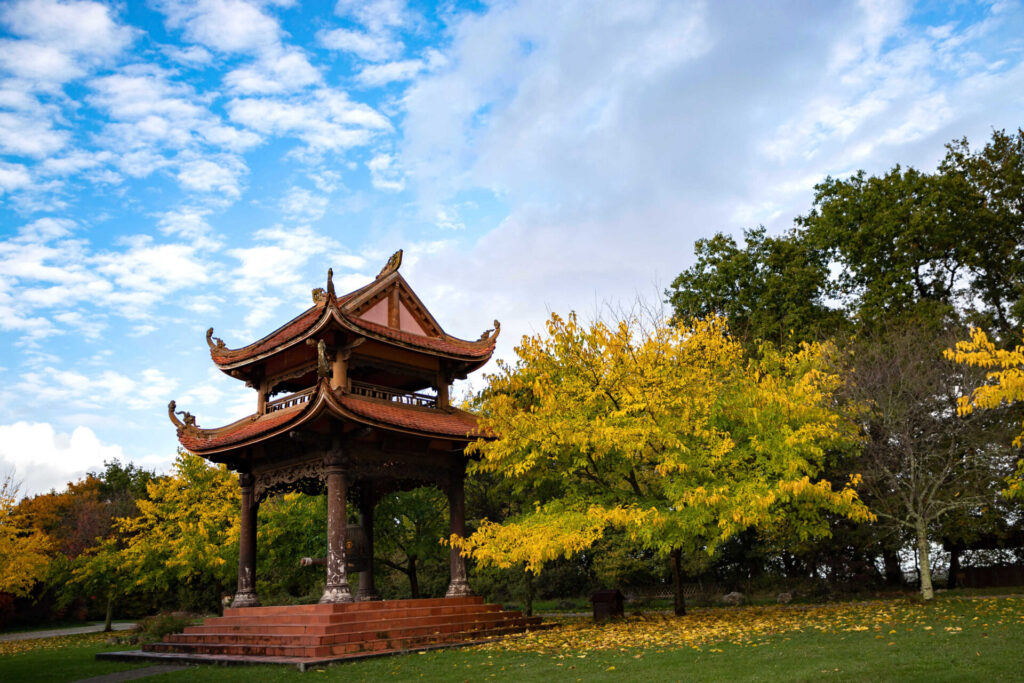In this article we explore the ways to study and practice Buddhism (Buddhist methodology) to help us become soulmates of the Buddha, or those who can understand the Buddha.
It is not unusual for people to misunderstand the Buddha’s teachings. Not only non-Buddhists, but Buddhists themselves can misunderstand the Buddha. Since even some disciples of the Buddha misunderstood him, it is unsurprising that many Western scholars also misunderstand the Buddha’s teachings. When we misunderstand the Buddha and transmit his teachings incorrectly, we pass that misunderstanding on to future generations.
In order to help us become soulmates of the Buddha, our ancestral teachers have handed down to us the ways of studying and practicing Buddhism (Buddhist methodology).
The Four Criteria of Truth
Sometimes as we read the sutras, or study the dharma doors, we may encounter teachings that seem to contradict each other. We may feel confused and not know which is right, as everything is said to be spoken by the Buddha. Why does the Buddha say one thing here and another thing there, with no consistency? That is why we need this method of the Four Criteria of Truth.
The World Criterion
The first criterion is the World Criterion [世 間 悉 檀] means that the Buddha should talk in accord with how people in the world see things, or from a conventional point of view. If the Buddha did not talk how people normally talk, they would not be able to understand him. For instance, the Buddha could say: “Ānanda, come with me for a walk on the hill.” Buddha uses words like me, Ānanda, and hill as if there were three separate selves: Buddha, Ānanda, and hill. However, according to the absolute truth in Buddha’s teachings, there are no separate selves. But if the Buddha did not use conventional language, how could he teach people of the world? When the Buddha says, “Come with me for a walk,” it does not mean that the Buddha believes in the existence of a separate self.
In the world, people use phrases like “the heavens above” and “the earth below.” It does not mean that those in Europe believe that people in Japan are sitting upside-down. Using worldly language does not mean that we are contradicting the truth. Worldly truth is a kind of truth, but it is relative, not absolute. The Buddha can also use expressions to communicate the relative truth.
According to the Person Criterion
The second criterion is According to the Person Criterion [各 各 為 人 悉 檀] When we speak, we must choose our language depending on the person we are speaking to.
Someone came to the Buddha and asked:“My friend has practiced for many years. When he dies, in which world will he appear?” The Buddha said: “He will probably be born in the Thirty-Third, or Tuṣita, heaven.” But when other people asked the same question, the Buddha replied: “He has not gone anywhere. He did not come from anywhere and he will not go anywhere.”
When people asked the Buddha why he gave two contradictory answers, the Buddha said:
“It depends on the person. If someone is not free of conceptions I answer him differently than I answer someone who is free of conceptions. A person who is caught in conceptions still needs something to hold on to.”
In Buddhism, we believe in cause and effect, or action and its result: what we sow, we shall reap. This is also called retribution. But in Buddhism, we also have the teachings on no-self. Generally, we think that the process of “action and the result of action” requires someone who sows the seed and, when the fruit is ripe, reaps that fruit. But the sutra says that there is no one who sows the seed and no one who receives the fruit of the action. There is a conflict: the teaching of no-self seems incompatible with the teaching of retribution.
Wise practitioners are not caught by this apparent contradiction. Using metaphors offered by the Buddha, they understand that there can be action and retribution without the need for a separate self.
Someone asks: “Is the actor and the one who receives the result of that action the same person? Or are they two different people?” If we say that it is one and the same person, we are caught by the view of permanence, also called eternalism or the view of sameness.
One day someone gave a woman a pan of milk to look after. He was away for some days. When he returned, he asked for his pan of milk. The woman gave him a pan of butter. He asked: “Where is my pan of milk? I left you with milk and now you are giving me butter.”
Are milk and butter the same or different? They are neither the same nor different. If you say that the person who reaps and the person who sows are two different people, you are caught by the view of annihilation. The view of permanence and the view of annihilation are both wrong views.
The teachings of the Buddha are deep and wonderful, but we must meet people where they are. When someone is new to the teachings, we must refer to a stable self; we must say the person who sows is the person who reaps. Even though it is an eternalistic view, that person is not yet ready to receive the deeper teachings. For another person, we might be able to talk in terms of “nothing is eternal and nothing is annihilated,” which is closer to the truth. This second criterion of truth suggests that the teachings are different depending on the capacity to understand of the person we are teaching.
The Healing Criterion
The third criterion is the Healing Criterion [對 治 悉 檀]. This criterion suggests that there are different kinds of medicine depending on the kind of sickness. If the doctor prescribes the wrong medicine, they may even kill someone. The same is true of the Dharma: if someone suffers from craving, attachment, infatuation, grief, or despair, we must offer the right teaching.
In the Buddha’s time, some monks misunderstood the teachings of impermanence, no-self, and suffering so badly that they committed suicide. The Buddha learnt from this. As Dharma teachers, we must learn, too; we should not assume that the teachings we give are suited to all audiences at all times. It is quite possible we have not yet understood the abilities and tendencies of the people we are teaching. Whatever teaching we give should be appropriate for the particular condition of the people we are teaching. It should also have the flavor of the Buddhadharma.
The Absolute Truth Criterion
The fourth criterion of truth is the Absolute Truth Criterion [第 一 義 悉 檀]. Absolute truth (in Sanskrit is paramārtha) can help liberate people from suffering, but we need to be careful: people may think they have discovered the absolute truth when they are in fact clinging to a relative truth.
The teachings of emptiness and interbeing, for example, are part of the absolute truth. The teaching of retribution—that “this is because that is”—is not the absolute truth. When we refer to “this” and “that” we are already talking in relative terms. When we say “this is because that is” we are still discriminating between “this” and “that.” According to the absolute truth, “this” lies in “that” or “this” is “that.” Child and mother are two different words but when we look deeply we see that the child lies in the mother and the mother lies in the child. The truth is that mother and child interare: the mother is the child and the child is the mother.
The day when Obama was voted in as President of the United States he wrote a very short message to his friends and voters: This happened because of you.
The Four Siddhāntas are the first point of reference in Buddhist methodology. If we can understand them, we can see how different teachings relate to each criterion of truth, and we won’t feel that different teachings contradict each other. Once we understand the four criteria we shall not be confused as we read the sutras.

The method of the Four Reliances
Reliance on the Dharma and not on the person (who teaches the Dharma) [依 法 不依 人].
When Thầy was a kindergarden student, Thầy’s teacher said to the children: “You should not wear high-heeled shoes. They make it much more difficult to walk and to stand, and you can easily twist your ankle.” The teacher, however, was wearing high-heeled shoes.
When we see that our teachers do not practice what they teach, we should not abandon the practice because of that. Even if a teacher does not yet practice well, they may have some precious knowledge of the Dharma. If, for instance, we want to retrieve a precious jewel that we mistakenly dropped into the garbage, we must root through the garbage with our hands. The precious jewel is the Dharma and the garbage is the person who teaches. That person is not pleasant but we tolerate them to learn the precious Dharma. Before the Buddhist scriptures were written down, there was an arrogant monk who had learnt by heart the whole Tripiṭaka[1]. The other monks knew that if they were not able to work with this monk, they would have no chance of writing down the Tripiṭaka. They skillfully put up with him, persuaded him to recite the whole Tripiṭaka, and transcribed the discourses. So do not abandon the teaching because of the teacher. Rely on the teaching and not on the teacher.
Thầy was very impressed when he heard about the First Reliance as a young monk. “Walk your talk!” is an expression in the United States, since people often come across a teacher who does not practice what they teach. In the same spirit, the Chinese philosopher Wang Yangmin[2] said, (知 行 合 一) “Understanding and behaviour go together.”
Reliance on the discourses of deep meaning and not on the discourses that are not deep [依 了義 經 不 依 不了義 經]
“Discourses of deep meaning” are the discourses that fulfill the criterion of the absolute truth. The discourses that are less deep do not offer the whole truth; they are for people who have not yet had the opportunity to deepen their practice. For instance, in the Sukhavatī Sūtra, there is the rhetorical question and response:
“Śāriputra, why is that land called the Land of Great Happiness? Śāriputra, it is because the people who live there only know happiness. They never experience suffering.”
This is a very attractive statement and its purpose is to give hope to those who suffer greatly. In fact, nearly all of us dream of a place where there is no suffering. So this sentence attracts the majority of us to the practice. At the same time, according to the deeper teachings of the Buddha, we realize the truth that happiness and suffering inter-are. Suffering is what makes happiness possible, just as mud makes the lotus flowers possible. Therefore, on a deep level, happiness is made of non-happiness elements. So the response to the rhetorical question is not deep. That is not to say that it does not have a role to play— people suffer so much and they need to see that happiness is possible through the practice.
We do not condemn the sentence in the Sukhavatī Sūtra but we recognize that this is not a sutra of deep meaning. In the end, we must rely on the sutras of deep meaning; at first, though, we need the sutras that aren’t quite as deep.
Reliance on the spirit and not on the letter [依 義 不 依 語].
When we read the sūtras we should not be caught in the word-for-word literal meaning. We must read between the lines to understand the spirit of the Buddha’s teaching. For example the teaching, “This is because that is,” does not mean that “this” is an entity separate from “that.”
Reliance on insight and not on the consciousness [依 智不 依 識].
Ignorance, prejudice, and habit energy are all part of our consciousness. Insight is bright and clear. It is not clouded by the afflictions and it is intuitive and does not need reasoning. That is why we should rely more on insight than we do on intellect.
[1] Literally “Three Baskets”. It refers to the Buddhist canon which consists of the baskets of the discourses, of the ethical code, and of the commentaries on the discourses.
[2] 1472-1529





